About Loyalty 2
The article describes the new Loyalty 2 solution for the SessionM platform. It introduces Loyalty 2, identifies its benefits and new features, and explains how to upgrade existing loyalty programs from the legacy Economy Rules module to new Loyalty 2 modules.
What is Loyalty 2?
Loyalty 2 is SessionM’s new solution for building loyalty programs. Loyalty 2 provides an enhanced member experience with significant new functionality, while delivering improved performance and reduced system complexity compared to the existing Economy Rules module.
Why did SessionM build Loyalty 2?
Loyalty 2 enables you to future proof your loyalty programs by adapting to new consumer demands and emerging industry trends. The key feature of Loyalty 2 is an advanced rules engine that supports custom, dynamic data. Loyalty 2 supports new use cases across a range of verticals.
Has the platform interface changed?
Loyalty 2 has three new modules:
-
Loyalty Programs, used to build the tier structures for loyalty programs.
-
Rules Management, used to define tier maintenance, purchase and event rules.
-
Rule Templates Management, used to define rule qualifiers, constraints, and outcomes. You then use these templates as repeatable components to simplify rule building.
The Economy Rules module is being phased out, replaced by the Loyalty Programs module moving forward.
Have the loyalty APIs changed?
The loyalty APIs have not changed. All APIs are backwards compatible.
Has any current functionality changed?
The look back feature is the only feature that has changed in functionality between Loyalty 1 and Loyalty 2. The legacy rules engine holds historical data, allowing you to create a rule to look at past transactions and be fully functional as soon as the rule is created. The Loyalty 2 rules engine needs the amount of time defined for the “look back” to gather the data. If you create a rule to look at transactions within the past 3 days, it will take 3 days to gather the data for the rule to be fully functional.
What is the new rules engine?
The key feature of Loyalty 2 is an advanced rules engine that supports custom, dynamic data.
-
You can now create and define transaction schemas with custom objects. You can add these objects to existing transaction headers or to new headers that you define. Additionally, you can define the property type of the custom objects.
-
Custom objects can now be considered in building rule qualifying logic, constraints and outcomes.
-
Rules can be built that quantify objects. This unlocks more ways for members to earn and enables you to monetize more than points and spend.
-
Points rewarded can be configured from each portion of the transaction schema.
-
Clients are not limited to subtotal or total spend +/- tax. Clients can configure points to be earned from various calculations on totals on the transaction schema.
What benefits does the new rules engine provide?
The new rules engine delivers enhanced functionality, improved performance and reduced complexity.
Enhanced functionality
See What new functionality does Loyalty 2 provide? for more information.
Improved performance
-
The new rules engine is built with the NoSQL database, which enables the SessionM platform to process data at scale. SessionM has noted performance improvements in the loyalty APIs ranging from 40-85% compared to Loyalty 1.
-
The new rules engine processes data on a member-by-member basis rather than in batches.
-
This reduces queue depth and provides faster processing time.
-
This also allows for prioritization of users. If a member is in the queue for a tier maintenance job and there is a call to determine tier status for that member, they move up in the queue line and evaluated immediately. This new way of processing data allows the response to produce the most accurate member status to date.
Reduced complexity
Loyalty 2 rules are built from rule templates. Rule templates hold all the complex logic behind rule qualifiers, constraints and outcomes that make up a complete rule. SessionM creates and manages the rules templates.
When building a rule, you do not need to repeatedly re-build the complex logic. Instead, you simply select the template prompt name and continue building the rule.
When you upgrade to Loyalty 2, SessionM creates all templates and rules on your behalf. Base templates for the common use cases are already created and are available immediately in your tenant.
What new functionality does Loyalty 2 provide?
The following image summarizes the new features in Loyalty 2.

Each feature is described below.
Flexible data intake
The custom object feature:
-
Creates and defines the data structure being sent to SessionM.
-
Builds rules with business-specific values.
-
Monetizes more than spend and reward customers from custom inputs.
An example of a transaction that has been extended with custom objects is shown below.

Note the addition of the Currency custom object to the transaction header, and the Transaction custom object.
The rule below leverages the Currency custom object to restrict purchases made with Euros.
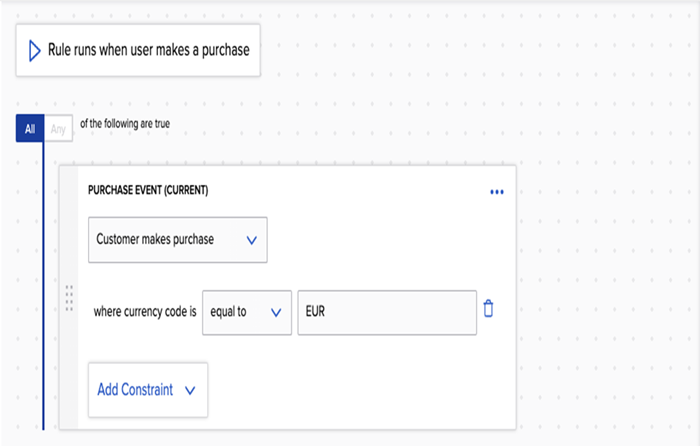
Rules templates
The rules template feature:
-
Reduces time spent building loyalty rules by capturing common business cases in a template that can be used repeatedly in rules.
-
Eliminates marketers’ need to understand complex configurations and focus on business cases only
An example of a template with complex business logic is shown below. This template is defined by a SessionM resource during platform implementation.

Then, when building a rule, the marketer simply selects the template prompt and is shown only business pertinent decisions.
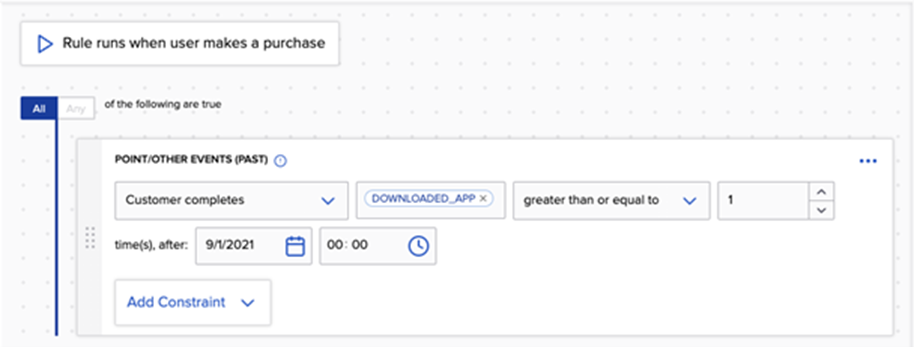
Multiple outcomes from single rule
Loyalty 2 supports multiple outcomes in a single rule. In the example below, the rule qualifier specifies that when a customer completes registration, they receive four outcomes.
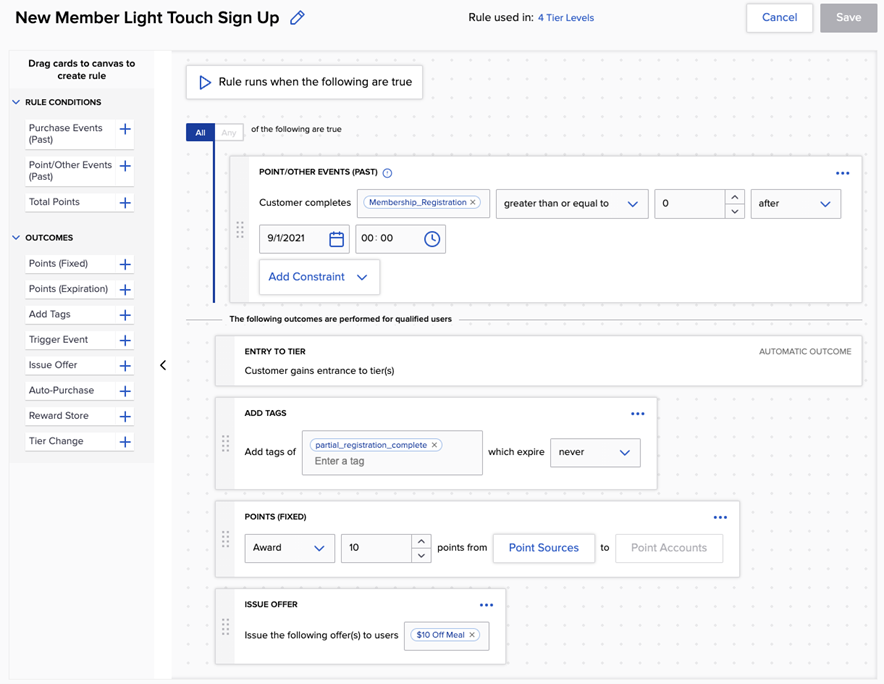
Move tiers as outcome
In Loyalty 2, you can define rules where the outcome either promotes members to a higher tier or demotes them to a lower tier based on purchases or interactions. When promoting members to a new tier, you can specify whether they receive tier entry rewards, the outcomes in the intermediate tiers or both.
The rule in the example below has an outcome that promotes members to a higher tier (SnickerDoodle) whey they complete a purchase of $200 and download the mobile app before September 1st.
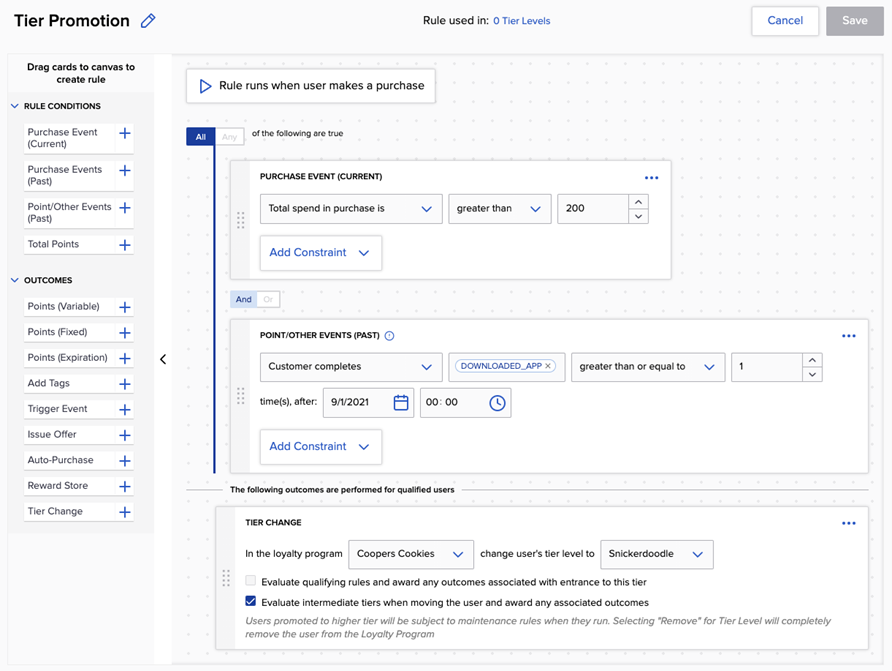
More ways to earn
In Loyalty 2, point awards are not limited to points per dollar spent. Points rewarded can be configured from each portion of the transaction. You are not limited to subtotal or total spend +/- tax. You can configure points to be earned from various calculations on totals on the transaction. You can evaluate custom objects based on count, product, sum, average, min or max.
Also, you can reward members based on the quantity of a custom object. For example, a member can earn points based on the number of miles flown.
The example below demonstrates calculating member spend based on multiple properties.
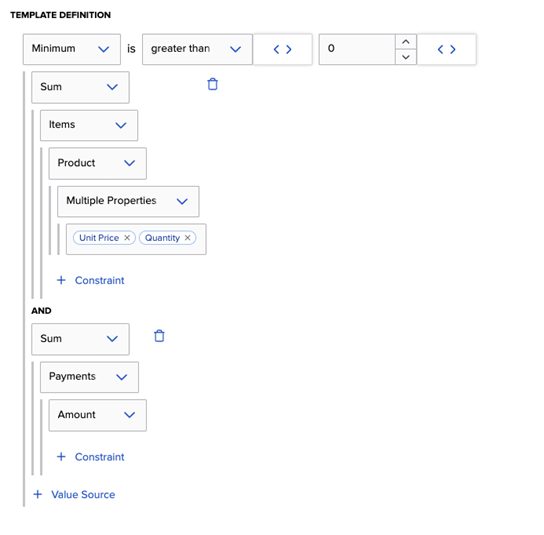
When can I migrate to Loyalty 2?
SessionM is currently upgrading clients to Loyalty 2 through Q4 2024.
To be upgraded to Loyalty 2 sooner than Q1 2024:
-
Your loyalty program cannot have look back rules that require more than 7 days of historical transaction data.
-
Additionally, tier maintenance should only be run at the new year and be completed to move to Loyalty 2.
-
"Points earned or burned" rules will not be supported in Loyalty 2 until after the completion of the points enhancement work"
If you have look back rules and consistent tier maintenance, plan on being upgraded to Loyalty 2 in Q2 2024.
See the chart below for a general timeline. Discuss the timing of your migration with your SessionM Customer Success representative.
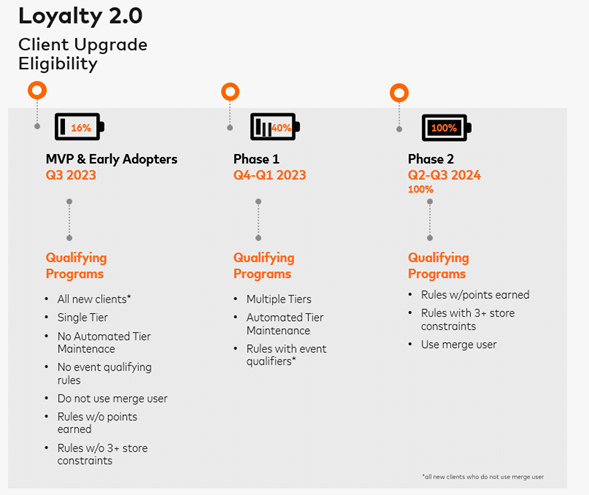
How do I migrate to Loyalty 2?
Given that changes to your loyalty program directly impact your members, SessionM recommends that you consult with your Customer Success representative to plan your migration to Loyalty 2. Upgrading requires a simple configuration change that points the internal SessionM APIs to the new rules engine. There is little to no client involvement.
Will there be downtime?
There is no outage. You should expect a 15-minute maintenance period that takes place during off hours, or outside of peak hours. During this time, SessionM makes the configuration changes. All incoming transactions are queued to be processed by the new rules engine once the configuration changes are complete.
Will I need to update my integrations?
No, there are no new endpoints that you need to add to your integration.
Will I need to re-build loyalty rules after migrating to Loyalty 2?
Rules will need to be rebuilt within Loyalty 2. SessionM recommends that you review your rules within Loyalty 2 to confirm they were rebuilt correctly.
What does SessionM recommend a customer do after the upgrade is complete?
Although we have completed extensive testing, we always recommend simple user acceptance testing (UAT).
When can I start using new Loyalty 2 functionality?
SessionM does not recommend changing your loyalty program at the time of the upgrade. It is best to complete the upgrade process, make sure your program is working as expected, then explore new use cases with your Customer Success contact.